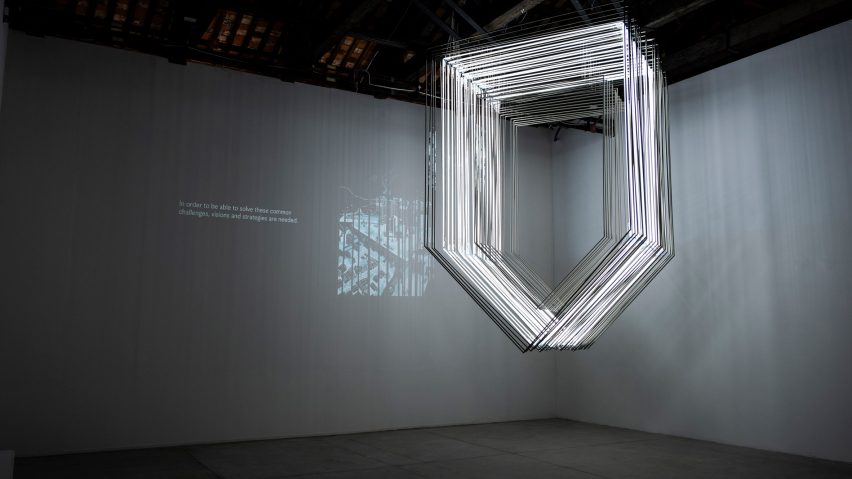
Inverted neon house installed in Kosovo pavilion at the Venice Architecture Biennale
The Kosovo pavilion at the Venice Architecture Biennale features an upside-down neon house as a comment on migration and to encourage visitors to "reflect on their own association with home".
Curated by Poliksen Qorri-Dragaj and Hamdi Qorri, the pavilion aims to encourage conversations about the various ways in which migrants, specifically those connected to the disintegration of Yugoslavia in the 1990s, remain connected to their home countries.
The main installation and the accompanying texts focus on the idea of translocality – that one can be mentally connected to several locations.
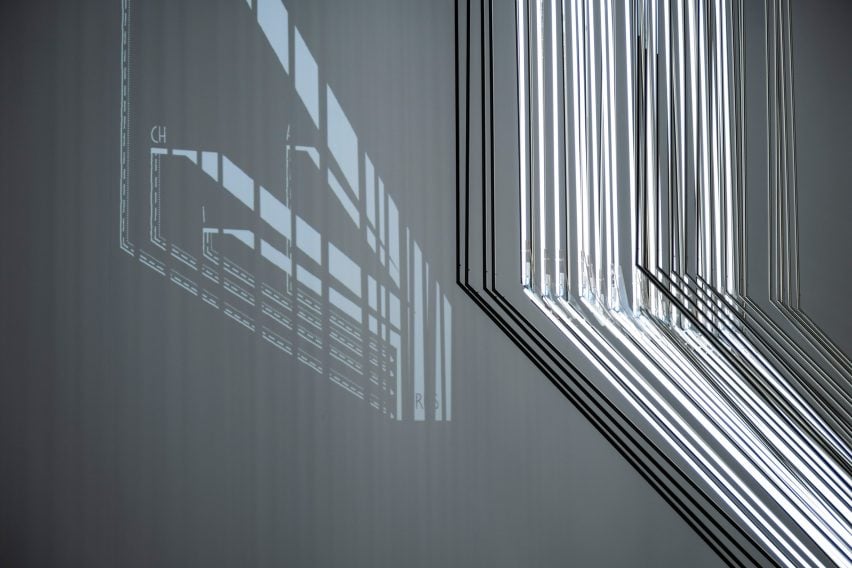
"The Kosovar pavilion is dedicated to the spatial effects of migration and translocality – issues that have shaped Kosovar society and its habitats enormously in recent decades," the curators told Dezeen.
"For our approach, war-related migration in the wake of the disintegration of Yugoslavia in the 1990s is of fundamental importance as a starting point," they continued.
"The abrupt flight, separation of families and physical uprooting represented a state of emergency for the refugees – physically, they were safe in the hostland, but internally, they were very vulnerable – thoughts revolved around abandoned and endangered people close to them and around the abandoned home."
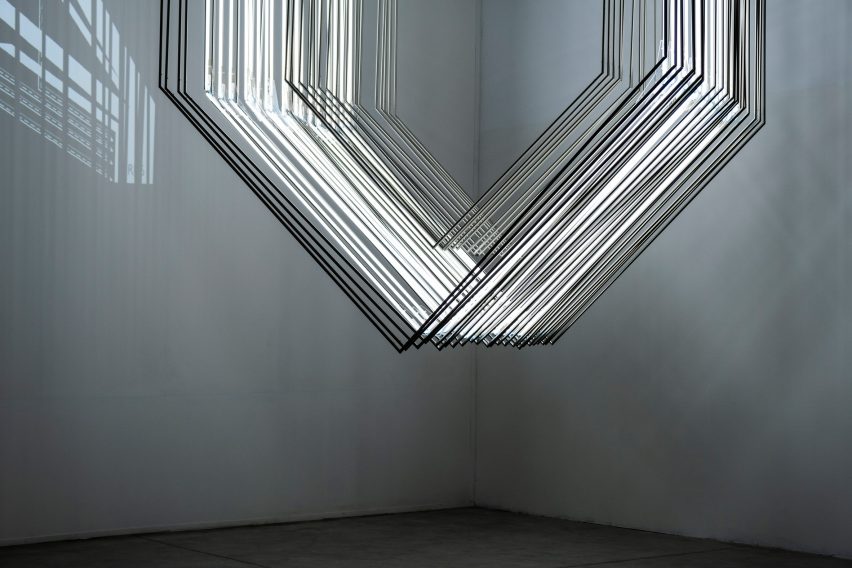
The centrepiece of the pavilion is a simple representation of a house that was hung from the ceiling. It was built from three layers, a neon centre sandwiched between a pair of aluminium frames.
"We take up the theme of translocality metaphorically with the help of our installation: the outer and inner aluminum frames symbolize the several places in which one lives," explained Qorri-Dragaj and Qorri.
"The neon frames in between take up the theme of being in-between, the question of one's own identity and spatial belonging."
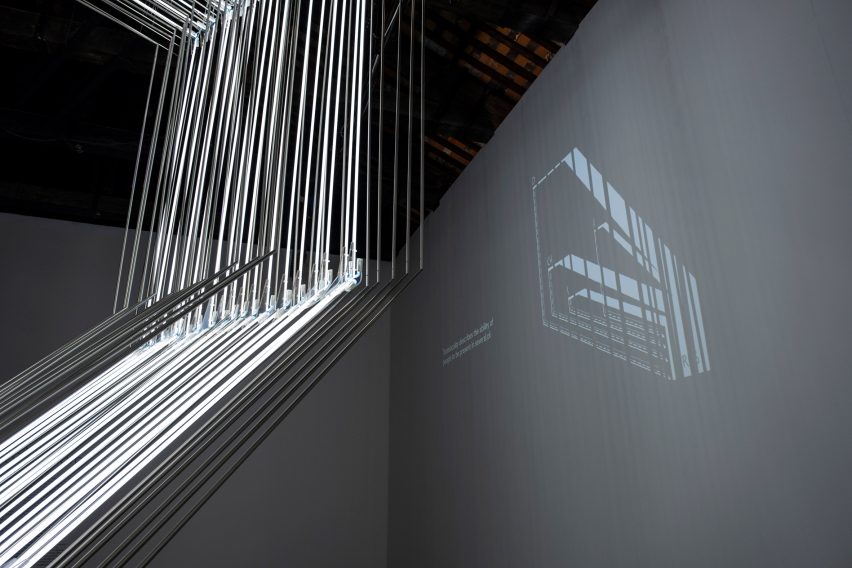
The house was inverted to draw attention to the "upside-down" emotional state of the migrants, while the aluminium structure represents a physical presence and the neon tubes a mental presence.
"The installation also takes up the idea of transcendent locality: the upside-down house symbolises the emotional state of the upside-down of refugees who are torn from their familiar environment due to conflict and war and are forced to leave everything they associate with warmth, shelter, security and family – ie their home," said Qorri-Dragaj and Qorri.
"The feeling of physical presence in one place and emotional presence in another is taken up again by the aluminium frames and the inner discord is symbolised by the neon tubes," they continued.
"The accompanying projected theses are intended to stimulate the viewer to reflect on his or her own association with home, to consider his or her own migration experience in a spatial context or to make a change of perspective."
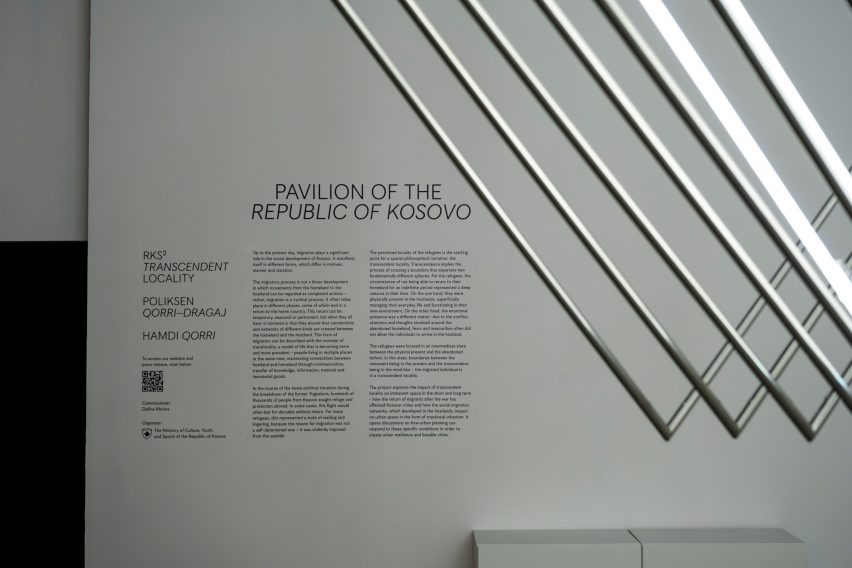
Alongside the Kosovo pavilion we have featured numerous pavilions at the Venice Architecture Biennale including the Brazilian pavilion, which was awarded this year's Golden Lion and the Australia pavilion that "questions the relics of the British Empire".
The photography is by Agon Dana – Ministry of Culture, Youth and Sports.
The Venice Architecture Biennale, which takes place from 20 May to 26 November 2023. See Dezeen Events Guide for all the latest information you need to know to attend the event, as well as a list of other architecture and design events taking place around the world.